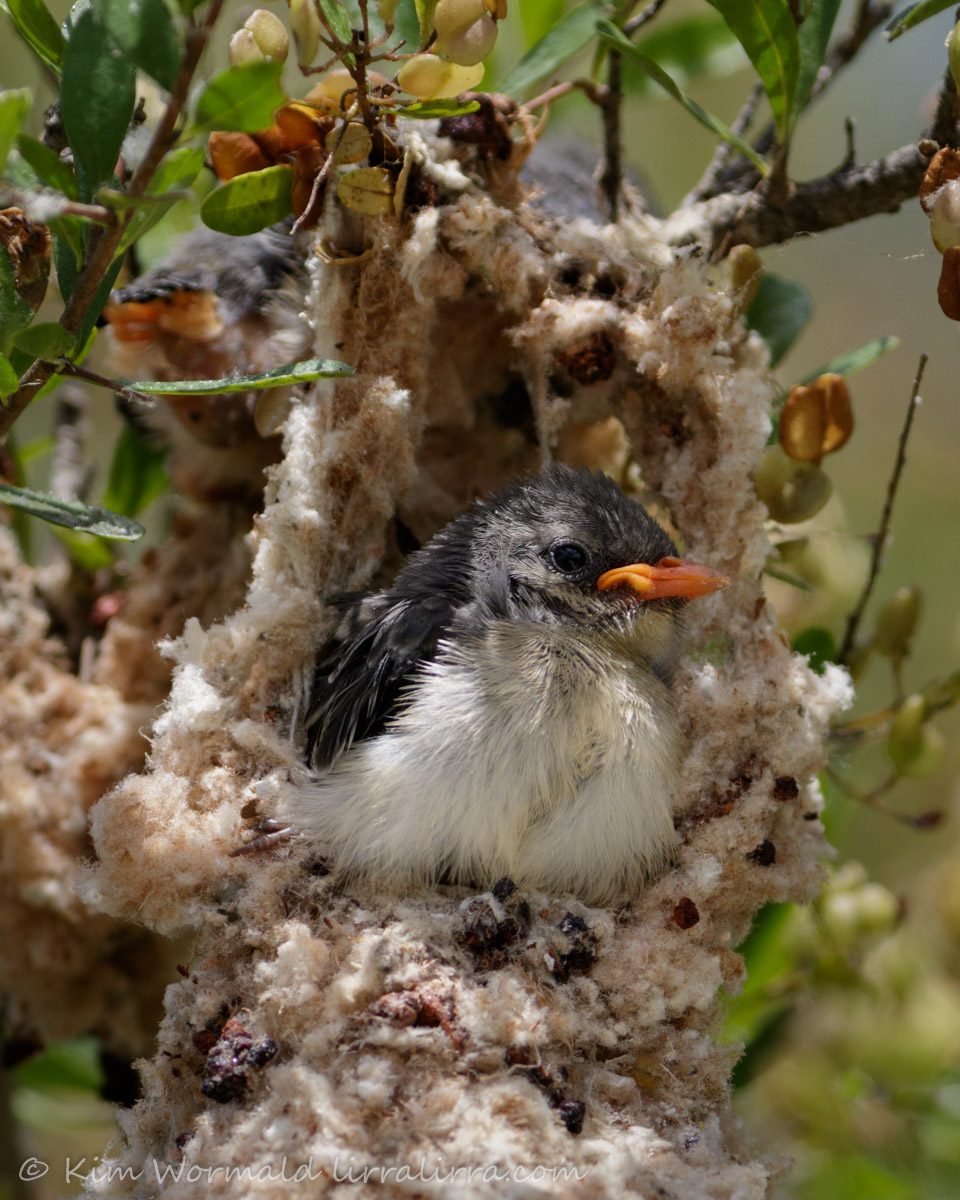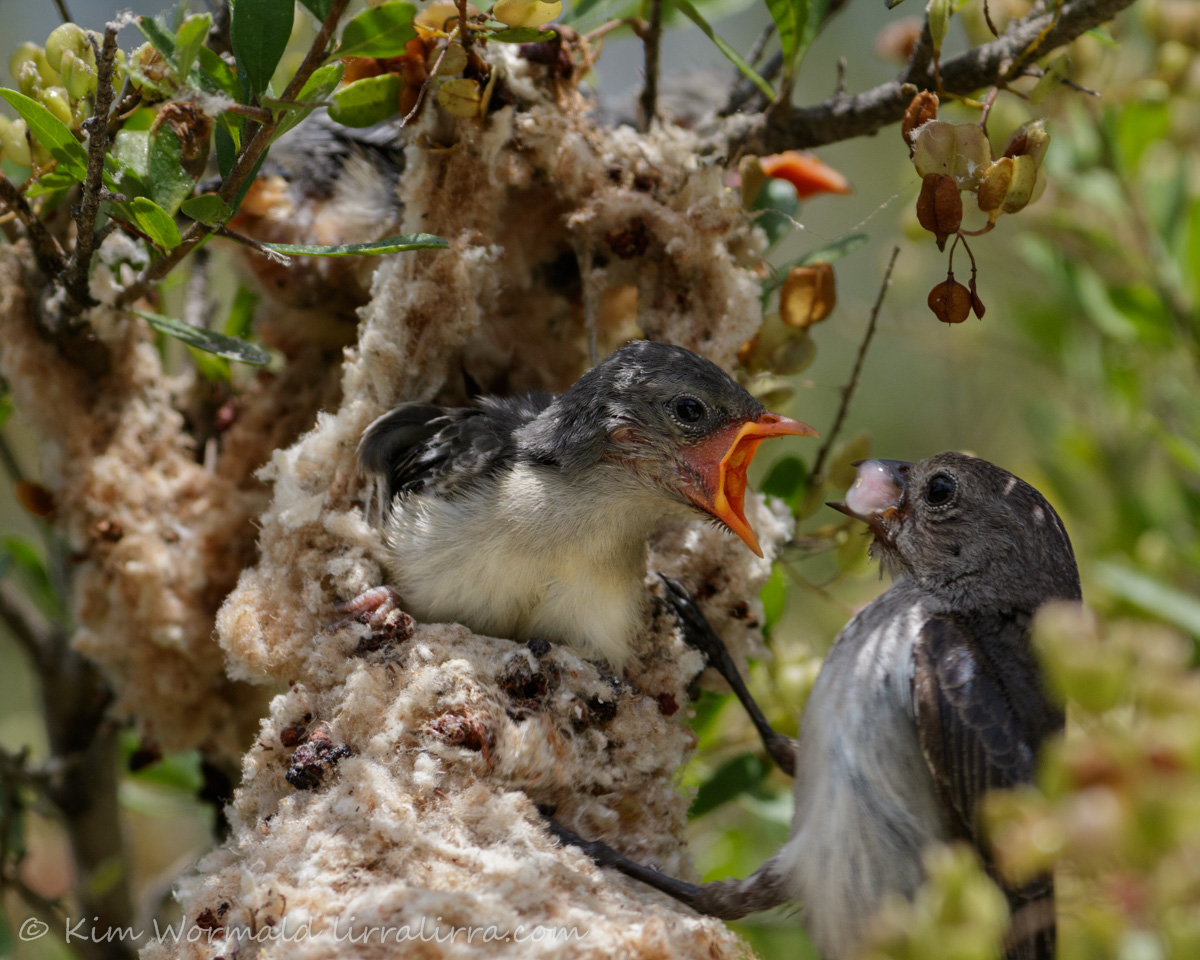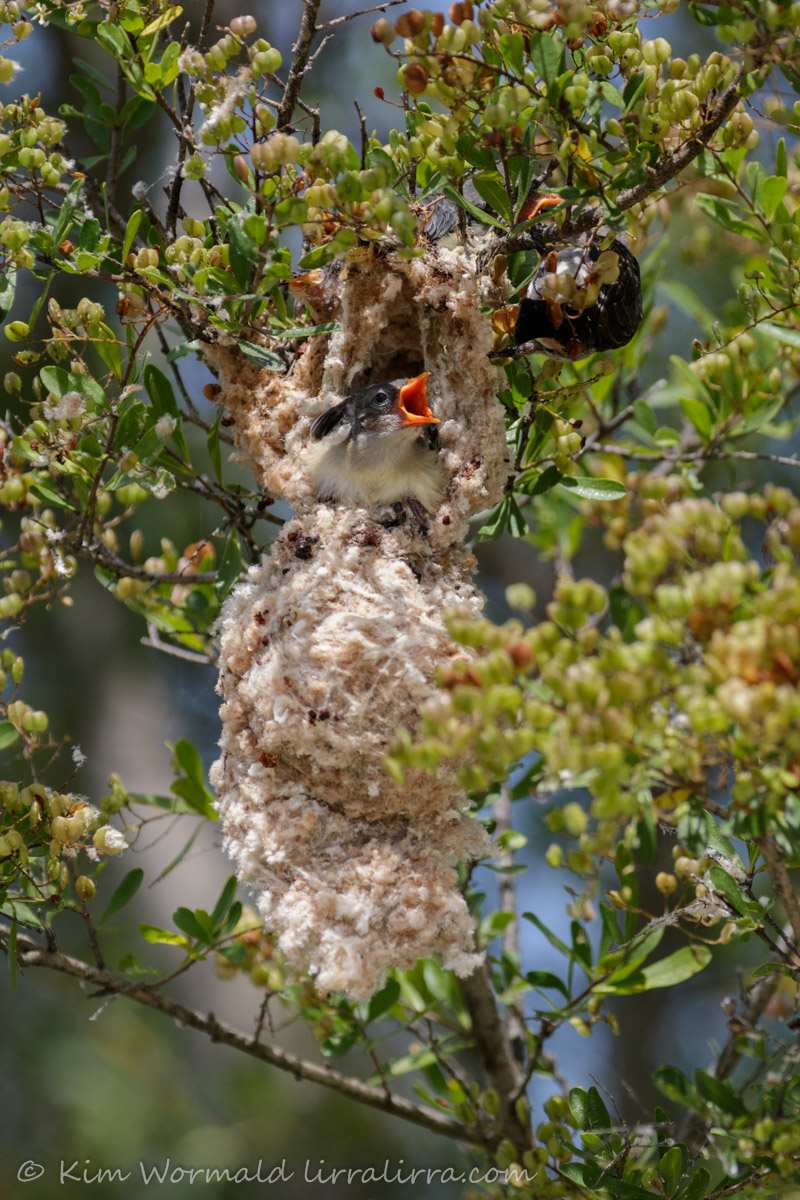Once in a blue moon I get an opportunity when I believe it is ethically acceptable to photograph a nest. I see lots of nests but usually watch from a distance, too far away for photography even if carrying a long lens. There are many ways that human interest can cause a nest to be abandoned or predated and I’m always saddened when I see images that appear to have been taken in ways that may have impacted nestlings.
Mistletoebird (Dicaeum hirundinaceum)
A little bird (thank you Julie) told me about this nest which was almost over-hanging a busy pathway around a lake. A few years ago Mistletoebirds nested in my garden, their cobwebby nest was shaped like a silken pouch and hung at head height from a eucalypt branch. After a while three little bills started peeking through the entrance slit. As the nestlings grew the pouch gradually expanded, it was amazing to watch.
In the image above the nest has practically disintegrated. There are two mistletoe babies in the image, both are ready to fledge. Adult Mistletoebirds are about 10cm in length and weigh about 9g, they are very tiny, very beautiful little birds.
Mistletoebird
The second nestling is easier to see in this image as both babies have their bills open hoping that mumma is going to feed them rather than their sibling.
Although baby Mistletoebirds are sometimes fed insects the main dietary item for Mistletoebirds are mistletoe berries which pass quickly through their digestive systems. When the berries are excreted they are sticky and don’t drop freely from the birds as most bird poops do, instead the birds have to wipe their poop onto branches to dislodge it. As the berries have passed through quickly the seeds are viable and germinate on the branches enabling new mistletoe plants to grow and ensuring an ongoing supply of berries for the birds – ingenious!
Male Mistletoebirds are more brightly coloured than females with black heads, upperparts and wings, bright red bibs, pale underparts with a dark streak in the centre, and pale red under their tails.
Mistletoebirds
The final image in the series shows the male bird feeding the upstairs chick. It also shows the exquisite detail of the nest and the extent to which the pouch had disintegrated.
More about bird photography ethics can be found at Australian Birdlife Photographers’ Code of Ethics and at an earlier lirralirra post Grey Fantails in an egg cup
Happy ethical birding, Kim
NB Although I was on the far side of the path to this nest, using a long lens and a heavy crop, I would no longer choose to photograph these nesting birds or share the images. Sadly many nests are lost from too much attention, or photographers (or others) behaving in ways that adversely impact the survival chances of the nestlings. I agree with, and promote, ethical guidelines that do not accept nesting shots in competitions or on social media.
~ Thank you for your visit and comments.
~ If you’d like to receive a weekly email informing you that lirralirra has been updated please join the growing list of subscribers by adding your email address to the ‘subscribe’ box above right.




All I can say is WOW! What awesome shots of a bird I’ve never heard of and such an interesting nest to boot! You amaze me….
Aw thank you Sherry!
Thanks Kim. Wow, I knew nothing about mistletoe birds. They are amazing and your photos are exquisite. So great, also, to see you promoting ethical bird photography – these wonderful creatures deserve to remain undisturbed and respected. xx
Thank you Sue, I’m so pleased you enjoyed the post and I know you care deeply about our wildlife xo
gorgeous Kimberley , the beauty of the nest is amazing , lot of hard work for these little guys. I have photographed a pair of mistletoes … and the male is beautiful love your caring ways towards nature
love your caring ways towards nature 
I agree Janele, the amount of work it must take to build a nest is astounding. We couldn’t do it! Male birds are stunning, your image sounds like a beauty. I think you must also be caring towards nature
I love this story and your approach to birding. Thank you for putting the birds first!
Thank you Rochelle, my pleasure
Kim, these photos are exquisite. I love your explanations also. Best wishes Valda
Thank you Valda, lovely to receive your comments, Kim
great to see you reminding/ teaching your readers about ethical birding, Kimberley. Sadly too many people forget about these in their efforts to get their own thrills.
Some people are in that category for sure but I think there are others who just don’t understand the harm they could be doing. I’m glad you care about ethical birding Elizabeth, thanks for your support.
Fantastic. Thanks for this. I love these little guys but have never been lucky enough to see a nest. Beautiful blog.
I hope you get to see a nest next season Evie, when it still looks like a silky pouch. I appreciate your comments, thank you.
Wow that’s amazing! I’d often wondered how mistletoe got on to trees! Great shots x
I’m so pleased that you enjoyed the post Tamsin, the birds relationship with mistletoe is fascinating x